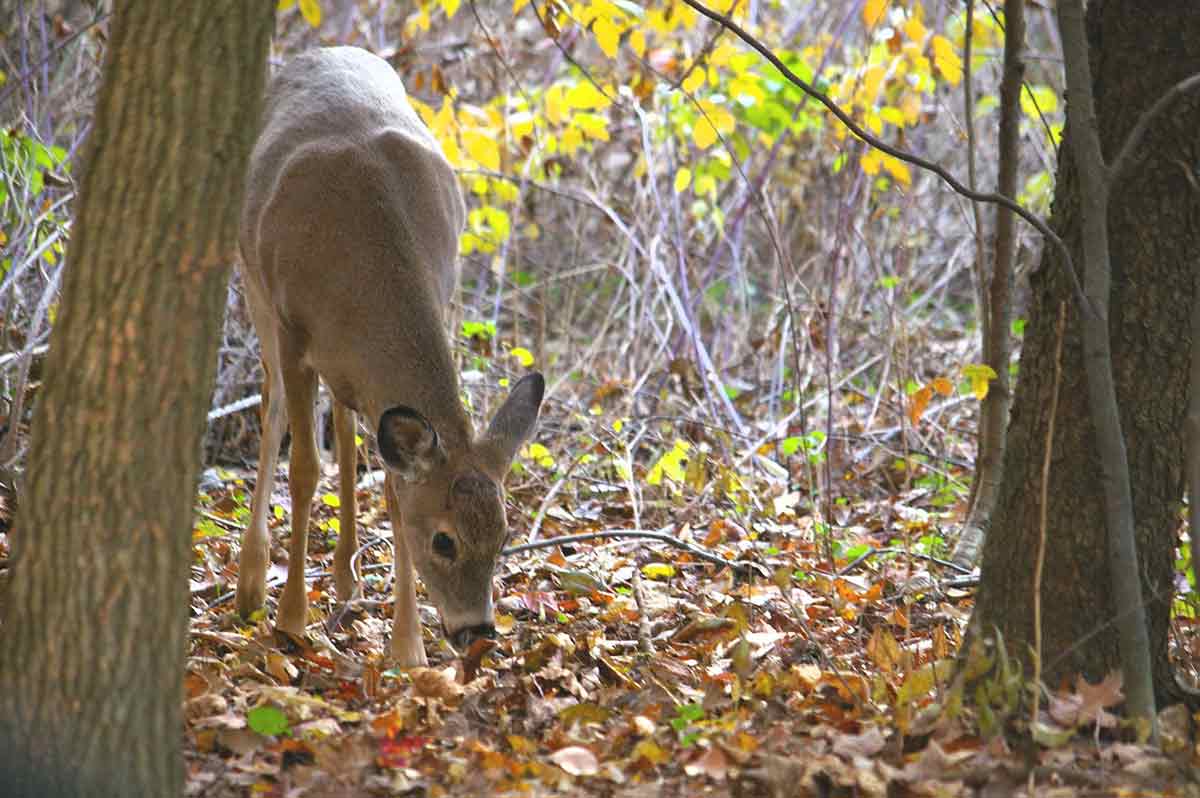
Targeted shooting aimed at finding chronic wasting disease failed to reveal any.
Bob Frye/Everybody Adventures
Sharpshooters killed deer in two areas of Pennsylvania this winter, looking for evidence of chronic wasting disease.
They didn’t find it.
But that doesn’t mean the effort was unsuccessful, said Wayne Laroche, special assistant for chronic wasting disease for the agency.
“Just because we didn’t get any doesn’t mean we didn’t do good,” he said.
The effort indicated where the disease – if not missing – is at least not yet detected, he said. That’s a positive in and of itself, he suggested.
But beyond that, questions remain.
Sharpshooters from the U.S. Department of Agriculture’s Animal and Plant Health Inspection Service shot deer in two locations.
That served two purposes, slightly different, based on location.
They killed 43 in Franklin County, near a deer farm that had a whitetail turn up positive for chronic wasting disease, Laroche said. That was to see how that farm might have impacted wild deer in the surrounding area.
“We want to make sure we have a means for detecting if there’s anything that got out of that farm,” Laroche said.
In the second case, sharpshooters killed 126 on state game land 87 in Clearfield County. They did so near the spot in Bell Township where a suspect deer was killed by a wildlife conservation officer last summer.
It turned out to indeed be positive for wasting disease.
It was a mature deer, biologists said, meaning it had presumably been spreading infectious prions on the landscape for some time. The goal with shooting deer there was to account for its wanderings.
“We attempted to shoot as many deer as we could there, to try to blink out any infection before it became established. And also to learn more about our capabilities of using that methodology in order to shoot to control disease,” Laroche said.
As for concerns about 126 deer removed from the woods, he said that occurred over a fairly large area, specifically 3.6 square miles.
The commission has made no decisions yet on whether it will do more targeted shooting in the future.
But it will be doing additional sampling in both of the places where shooting took place this winter, by collecting and examining deer pellets as well as deer hit along roads or killed by hunters.
No method of sampling deer for chronic wasting disease is perfect, Laroche said. So the commission is trying to figure out how to spot, contain and eradicate the disease. That includes using hunters and more.
That work needs to go on, said Bryan Burhans, executive director of the commission. It’s true no chronic wasting disease was found, he said. But that doesn’t mean it’s not out there.
It takes a while to show up in sick deer, he noted.
“Saying that it was not detected does not mean all of the deer were negative for the disease,” Burhans said. That’s two different things.”
New rules meant to support targeted shooting, other CWD efforts
The Game Commission is also attacking chronic wasting disease via some new rules impacting hunters.
Starting this fall, hunters who kill deer anywhere in New York, Ohio, Maryland or West Virginia are prohibited from bringing them home “without first removing the carcass parts with the highest risk of transmitting chronic wasting disease.”
High-risk parts include brains, spinal cords, skull plates with attached antlers, unfinished taxidermy mounts, brain-tanned hides and the like.
That’s a tightening of restrictions.
The commission has long prohibited importation of high-risk parts home from states and Canadian provinces with CWD.
Those four adjoining states were an exception, however. Hunters could bring whole deer back from them, generally. They just couldn’t come from a county where wasting disease was detected.
The new rule is to better protect Pennsylvania’s free-ranging deer herd, said commission executive director Brian Burhans.
“As we’ve seen in Pennsylvania, just because CWD appears confined to a specific area, doesn’t mean it won’t turn up somewhere completely new, miles away,” Burhans said. “Tightening up this order puts teeth in the Game Commission’s ability to enforce it, allowing us to better protect our deer and elk from CWD.”
In total, there are 24 states and two Canadian provinces from which high-risk cervid parts cannot be imported into Pennsylvania. They are: Arkansas, Colorado, Illinois, Iowa, Kansas, Maryland, Michigan, Minnesota, Mississippi, Missouri, Montana, Nebraska, New Mexico, New York, North Dakota, Ohio, Oklahoma, South Dakota, Texas, Utah, Virginia, West Virginia, Wisconsin, Wyoming, Alberta and Saskatchewan.








